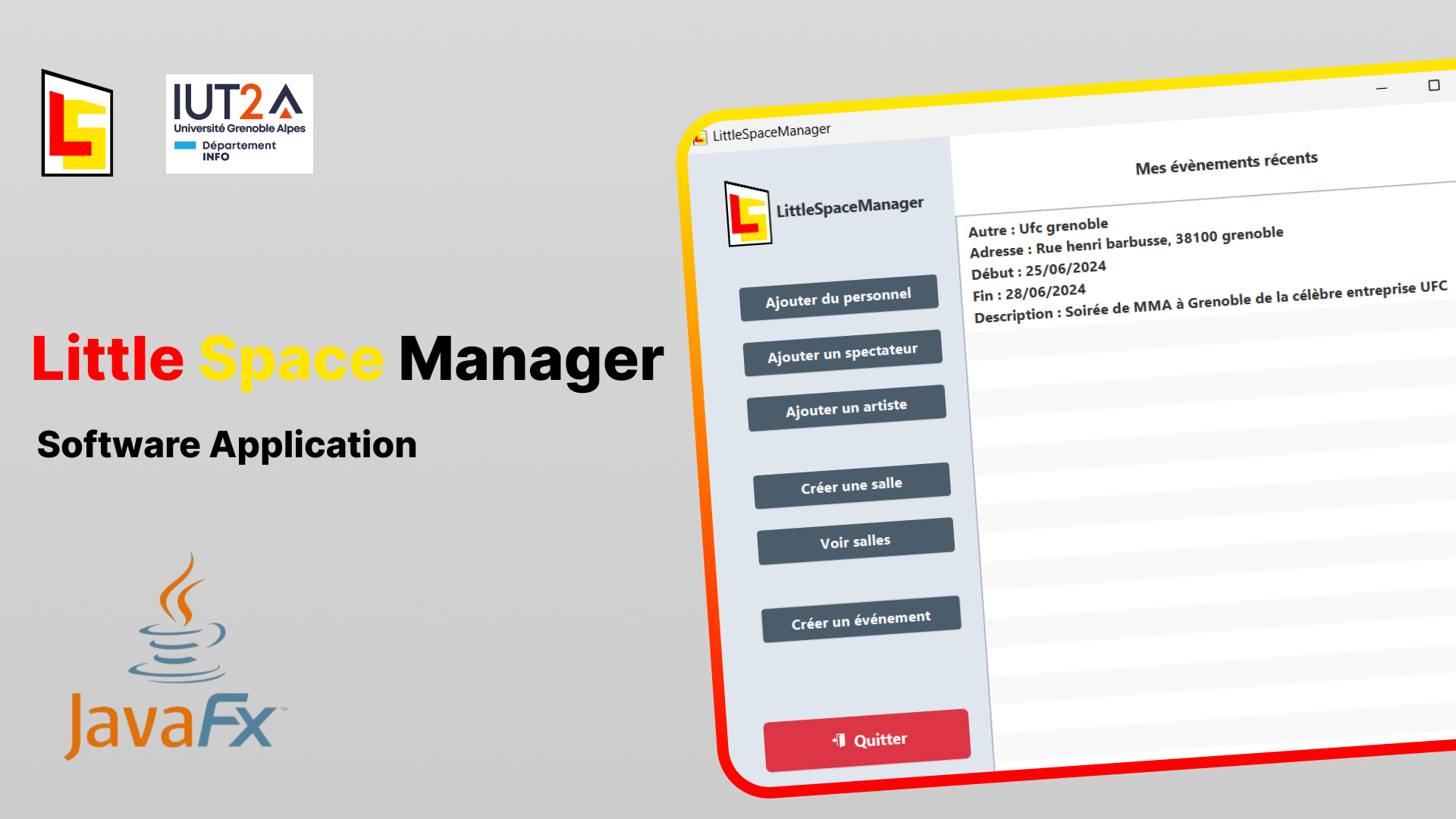
Project Overview
Our first year project was to create an event management application. What was interesting about it was that we had to do every part of a startup creation and launch: from the idea to the design and development, including the project management, marketing, and the business plan.
At the end of the project, we had to make a pitch in front of a jury of investors in English and in French to convince them to invest in our project just like in the famous TV show 'Shark Tank'. We also had to make a presentation of our project in front of our software development professors to explain the process of creation, and to show the final product by doing a demo of the application.
I joined a team of 6 students to come up with the idea of LittleSpaceManager, a software solution designed for the efficient management of municipal event venues. Our application simplifies scheduling, budget forecasting, and resource management, addressing the common challenges faced by municipalities in organizing events.
Problems Addressed:
- Budget Management Issues
- Inadequate Tracking
- Coordination Misunderstandings
Our Solutions:
- Comprehensive scheduling and budget management for event spaces.
- Efficient room availability management.
- Effective management of human and material resources.
Target Audience: Municipalities and local governments
We were constrained to use JavaFX to develop the application.
First, we had to conduct a thorough project framing report that included defining project constraints, assessing risks, creating a criticality matrix, and establishing a RACI (Responsible, Accountable, Consulted, Informed) chart.
Next, we developed a complete design report. This included defining use cases, both nominal and alternative, and prioritizing them. We created detailed class diagrams, showcasing compositions, aggregations, and various associations. We also produced sequence diagrams to illustrate scenario details.

We designed few sequence diagrams to illustrate scenario details. For example, we created a sequence diagram for the process of creating a new event. This diagram showed the interactions between the user and the system, detailing the steps involved in creating an event.

We then moved on to the Human-Machine Interface (HMI) design report. This involved creating a mock-up and wireframe model, as well as defining personas and ergonomic criteria to ensure a user-friendly interface. A usability test was conducted to evaluate the application’s ease of use.

The application code was developed in MVC structure. We ensured code quality with proper JavaDoc documentation and unit tests.
📸 See the user interface in this UI showcase PDF.
Project Results
- 17/20 for the pitch in french
- 14.5/20 for the pitch in english
- 18.25/20 for the project presentation and the application's functionality and design received positive feedback from our professors.
This project strengthened key cross-functional skills essential for professional software development: structured planning, advanced UML modeling, MVC architecture implementation, rigorous version control and documentation, and adaptation to technical constraints (JavaFX).
It also enhanced our ability to work collaboratively on end-to-end projects, deliver usable outputs, and communicate effectively with both technical and non-technical audiences.
